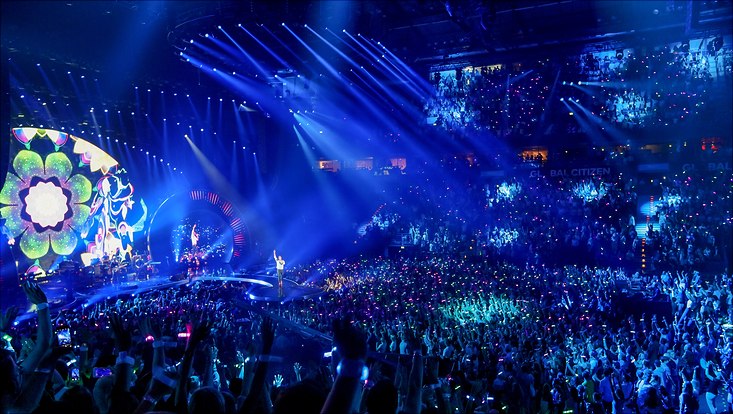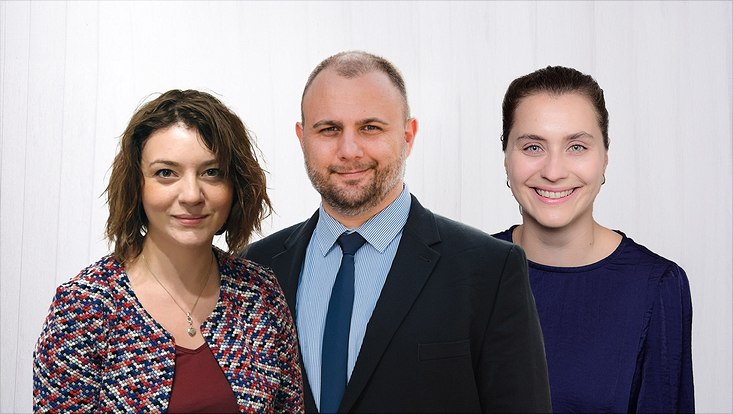More live streams from the WAVE networkStudying Gravitational Waves with Taylor, Justin, and the Scorpions
4 September 2024, by Newsroom editorial office

Photo: Barclays Arena
At the end of July, roughly 800 people simultaneously followed seismic waves per live stream generated by a Taylor Swift concert in Hamburg’s Volksparkstadion. The recording provided the WAVE research team with important findings and recordings of the Justin Timberlake and Scorpions’ concerts followed.
The waves were measurable along the entire length of the tunnel of the European XFEL, which ends in Schenefeld more than 3 meters away from the Volksparkstadion. The measurements were taken during the songs “Love Story” and “Shake It Off” at the Taylor Swift concert in July. And the 19 km glass fiber network in Science City Hamburg-Bahrenfeld, which uses the WAVE research network as a seismic sensor, as well as the PETRA III accelerator at DESY provided extensive recorded data throughout the entire concert. The measurements were broadcast via live stream.
This was not done simply to entertain fans. “Naturally, it’s a great opportunity to make our research accessible to a larger public and to show how dynamic it is underground,” said Prof. Dr Céline Hadziioannou, professor of seismology at the University of Hamburg. The results, however, also concretely helped researchers. “The songs generated different seismic signals. This helps us understand, for example, how they were generated, meaning by the bass in the music or by the fans jumping up and down,” said Prof. Dr. Katharina-Sophie Isleif, professor of measurement technology at the Helmut-Schmidt-Universität and member of the Cluster of Excellence Quantum Universe at the University of Hamburg.
Improving measuring instruments and understanding the movements of waves
And the routes that waves take from the places they are generated are also very telling. This is why various events are recorded. After Taylor Swift, the research team recorded the singer Robbie Williams and the band Deichkind at their concerts at the Trabrennbahn via livestream. Then, on 4 September, it was Justin Timberlake’s and on 13 September the Scorpions’ turns, both in the Barclays Arena. Several home soccer games played, for example, by the HSV, and even major storms contribute to the analyses.
The findings can further refine and improve the measuring network. Furthermore, understanding waves and how they spread can help us better ascertain things like changes in the temperature or underground moisture in the future. This makes it possible to say something about the influence of climate change on the city. Moreover, the findings are important for the research on gravitational waves being conducted in, among other places, Quantum Universe.
Because experiments on detecting these cosmic signals are extremely sensitive to any and every kind of vibration, it is essential to precisely measure and predict possible disruptive waves. Seismic networks like WAVE should help to reduce this so-called Newtonian Noise. “With these concerts, we are effectively training ourselves and the network to facilitate pioneering physical discoveries,” said Prof. Dr. Oliver Gerberding, professor of gravitational wave detection at the University of Hamburg.
Interdisciplinary cooperation
WAVE is coordinated by Hadziioannou and Gerberding from the University of Hamburg, Isleif from the Helmut-Schmidt-Universität, and Dr. Holger Schlarb from DESY. Researchers at the European XFEL and the GFZ German Centre for Geosciences Potsdam. The live streams are available on the network’s page.
Science City Hamburg Bahrenfeld
Located directly next to Volkspark Altona, Science City Hamburg Bahrenfeld is being built on 125 hectares in the west of Hamburg. In addition to the University of Hamburg, the research campus is already home to renowned institutions such as the Deutsches Elektronen-Synchrotron (DESY), the European X-Ray Free-Electron Laser GmbH, the Max Planck Institute for the Structure and Dynamics of Matter and the European Molecular Biology Laboratory. Two of the university's four clusters of excellence are also based here: “CUI: Advanced Imaging of Matter” and “Quantum Universe”.
And the area continues to grow: by 2040, research, education and companies are to be complemented by lively residential quarters, sports, leisure and shopping facilities. A highway overpass over the A7 and the relocation of the Hamburg harness racing track will enable the construction of around 3,000 new apartments and two schools.
Science City Hamburg Bahrenfeld GmbH is responsible for the development of the site. It operates an information center that offers information for visitors as well as guided walks around the site. More information on this and the current development of Science City Hamburg Bahrenfeld can be found on their homepage.


